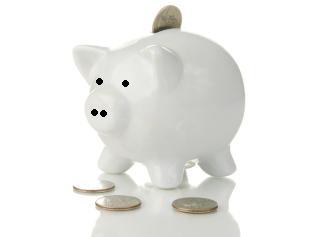Concept of Investment Man, it is said, lives on hope. But, hope is only a necessary condition for life, but not sufficient. There are many other materialistic things that he needs – food, clothing, shelter, etc. And, like his hope, his needs too keep changing through his life. To make things more uncertain, his ability to fulfill the needs too changes significantly. When his current ability (current income) to fulfill his needs exceeds his current needs (current expenditure), he saves the excess. The savings may be buried in the backyard, or hidden under a mattress. Or, he may feel that it is better to give up the current possession of these savings for a future larger amount of money that can be used for consumption in future. In contrast to the above situation, if the amount available for current consumption is less than the current needs, he has toContinue reading
Investment Ideas
Types of Credit Derivatives
In finance, a credit derivative is a securitized derivative whose value is derived from the credit risk on an underlying bond, loan or any other financial asset. In this way, the credit risk is on an entity other than the counter-parties to the transaction itself. This entity is known as the reference entity and may be a corporate, a sovereign or any other form of legal entity which has incurred debt. Credit derivatives are bilateral contracts between a buyer and seller under which the seller sells protection against the credit risk of the reference entity. Similar to placing a bet at the racetrack, where the person placing the bet does not own the horse or the track or have anything else to do with the race, the person buying the credit derivative doesn’t necessarily own the bond (the reference entity) that is the object of the wager. He or sheContinue reading
Pricing of Options
Options contracts, as well, must be evaluated to determine their worth. Although like any good or service, supply and demand for, say, options will affect the price; to understand the value underlying the price, we need to look deeper. Just as we would consider such factors as the quantity and quality of earnings, price-earnings ratio, and industry outlook, to determine the value of a firm; so we must use the various performance measures to analyze options and futures. Their analysis is complicated by their relationship with the underlying instrument. The underlying asset price therefore is a critical ingredient in the valuation or pricing of options. A key ingredient in the pricing of options thus is the relationship of the option or future to the underlying security on or before expiration determines its value. The price of an option or a futures security will always be a function of theContinue reading
Organization of Mutual Fund
Mutual fund is a trust that pools the savings of a number of investors who share a common financial goal. This pool of money is invested in accordance with a stated objective. The joint ownership of the fund is thus “Mutual”, i.e. the fund belongs to all investors. The money thus collected is then invested in capital market instruments such as shares, debentures and other securities. The income earned through these investments and the capital appreciations realized are shared by its unit holders in proportion the number of units owned by them. Thus a Mutual Fund is the most suitable investment for the common man as it offers an opportunity to invest in a diversified, professionally managed basket of securities at a relatively low cost. A Mutual Fund is an investment tool that allows small investors access to a well-diversified portfolio of equities, bonds and other securities. Each shareholder participatesContinue reading
Industry Analysis and Investment Decision
An investor must examine the industry in which a company operates because this can have a tremendous effect on its results, and even its existence. A company’s management may be superior, its balance sheet strong and its reputation enviable. However, the company may not have diversified and the industry within which it operates may be in a depression. This can result in a tremendous decline in revenues and even threaten the viability of the company. The first step in industry analysis is to determine the cycle it is in, or the stage of maturity of the industry. All industries evolve through the following stages: The Entrepreneurial or Nascent Stage: At the first stage, the industry is new and it can take some time for it to properly establish itself. In the early days, it may actually make losses. At this time there may also not be many companies in theContinue reading
Investment Decisions based on the Economic Cycle
Countries go through the business or economic cycle and the stage of the cycle at which a country has a direct impact both on industry and individual companies. It affects investment decisions, employment, demand and the profitability of companies. While some industries such as shipping or consumer durable goods are greatly affected by the business cycle, others such as the food or health industry are not affected to the same extent. This is because in regard to certain products consumers can postpone their purchase decisions, whereas in certain others they cannot. The four stages of an economic cycle are: Depression: At the time of depression, demand is low and falling. Inflation is high and so are interest rates. Companies, crippled by high borrowing and falling sales, are forced to curtail production, close down plants built at times of higher demand, and let workers go. Recovery: During this phase, the economyContinue reading
